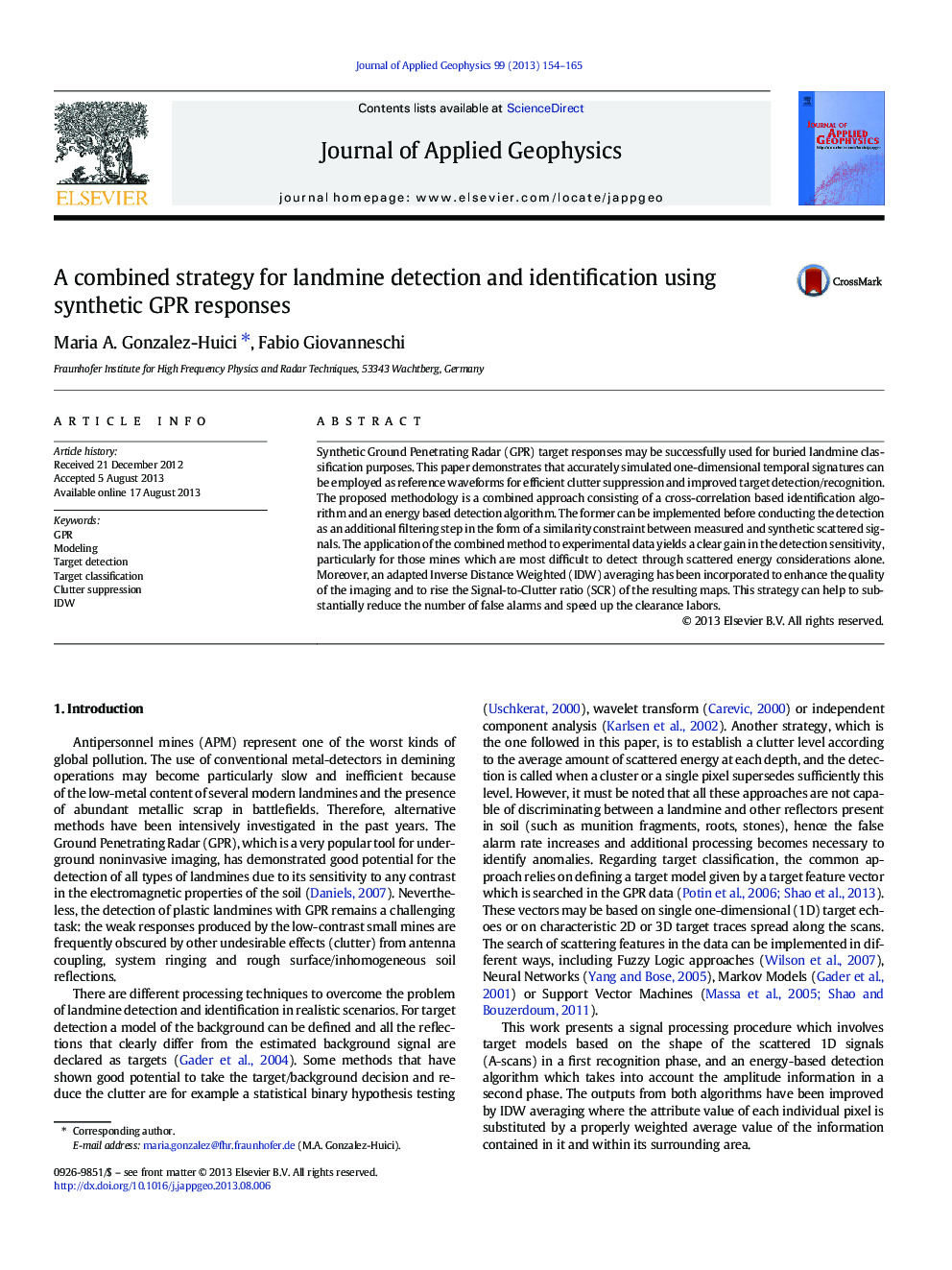| Article ID | Journal | Published Year | Pages | File Type |
|---|---|---|---|---|
| 4740253 | Journal of Applied Geophysics | 2013 | 12 Pages |
•Modeled radar target responses can be used to increase the landmine detection rate.•False alarm is reduced through a similarity constraint with synthetic GPR signatures.•Accurately simulated target signatures may help to classify buried landmines with GPR.•The SCR of a GPR image is improved using an Inverse Distance Weighted averaging.•The clutter amount in GPR landmine detection maps is reduced applying IDW averaging.
Synthetic Ground Penetrating Radar (GPR) target responses may be successfully used for buried landmine classification purposes. This paper demonstrates that accurately simulated one-dimensional temporal signatures can be employed as reference waveforms for efficient clutter suppression and improved target detection/recognition. The proposed methodology is a combined approach consisting of a cross-correlation based identification algorithm and an energy based detection algorithm. The former can be implemented before conducting the detection as an additional filtering step in the form of a similarity constraint between measured and synthetic scattered signals. The application of the combined method to experimental data yields a clear gain in the detection sensitivity, particularly for those mines which are most difficult to detect through scattered energy considerations alone. Moreover, an adapted Inverse Distance Weighted (IDW) averaging has been incorporated to enhance the quality of the imaging and to rise the Signal-to-Clutter ratio (SCR) of the resulting maps. This strategy can help to substantially reduce the number of false alarms and speed up the clearance labors.
